FTA (изд-во). Flexography: Principles And Practices. Vol.1-6
Подождите немного. Документ загружается.

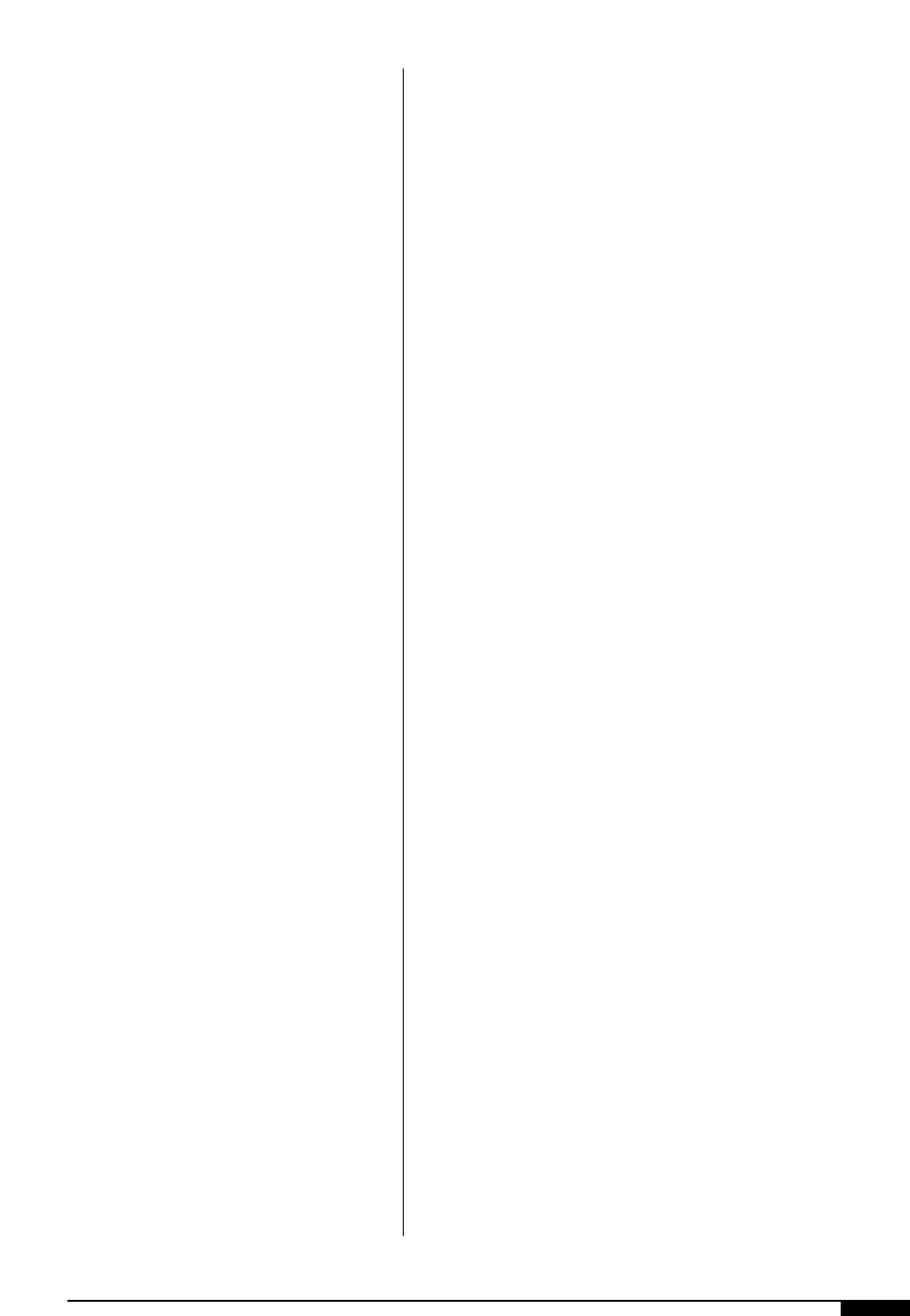
PRESSES AND PRESS EQUIPMENT 123
Thinner Printing Plates
Since flexo corrugated presses are a deriv-
ative of letterpress presses, printing plates of
0.25" thickness, mounted on a 0.030" backing
for a press undercut of 0.280", are still found
in the majority of corrugated converting
plants today. Such plates may be produced
from natural molded rubber (a dying art),
synthetic molded rubber, liquid or sheet pho-
tocurable polymer, or laser-engraved rubber.
Even on brand-new machines, cylinders are
sized to receive plates as mentioned above
simply because converters have accumulat-
ed hundreds, if not thousands, of printing
plates for ongoing repeat business.
Thinner printing plates provide the advan-
tages of lower print relief and higher print
image definition – necessary if high-resolu-
tion halftone images are to be printed. For-
tunately, an increasing number of printers
have decided to part with the past and work
with an overall plate thickness starting at
about 0.125" (3 mm), up to about 0.1875" (5
mm). Although the thickness of the plate
material itself may measure only 0.067" (1.7
mm), the thinnest is used on corrugated
today, because corrugated is such a variable
substrate, a “cushioning foam” backing mate-
rial is used to bring the plate to the overall
caliper necessary to meet the undercut built
into the press.
Some compromises are always necessary
to conform to the printing diameter of the
press and the cylinder undercut. For exam-
ple, if an overall plate caliper of 0.185" (4.65
mm) is chosen, a 0.125" (3.15 mm) plate must
be under-packed, or permanently mounted,
with 0.060" foam backing material. Any com-
bination of plate thickness plus foam (cush-
ioning material) can generally be used as
long as the overall caliper corresponds to the
printing diameter of a press. A 1:2 ratio of
cushioning material to plate is preferred.
Quick-change Anilox Roll Systems
An anilox roll is capable of giving only one
amount of ink: the content of its engraved,
or laser-burned cells. Any deviation from
this simple law means variation in ink lay-
down or ink density.
Mixing of large solids with screens or fine
type on the same printing unit is not recom-
mended in flexography. In corrugated post-
printing, for years, printers were compelled
to compromise because the anilox roll was,
for all practical purposes, a fixed part of the
printing press. To change a roll or rolls would
take a team of mechanics from several hours
to an entire weekend. Today, most printers
understand that the characteristics of a par-
ticular anilox roll limit its application to a nar-
row band of substrates as well as selected
graphics. Several anilox rolls may be needed
per printing station to enable the printer to
use the right tool for the job at hand.
With the increasing demand for more and
more intricate graphics, such as process
work with plate screens up to 150 lpi, it has
become necessary to build printing presses
with quick-change anilox roll systems. The
tremendously varied substrates utilized in
corrugated demand ink lay downs from as
little as 2 BCM/in
2
(e.g., with process print
on heavily clay coated paper) to as much as
14 BCM/in
2
for very absorbent recycled
liner. These very large differences between
rolls explain why press manufacturers for
the corrugated postprinting field are com-
pelled to build machines with “quick-
change” systems for anilox rolls.
Internal Change, Semiautomatic. Today, ma-
chines with 100% automated anilox roll-
changing systems are available. The semi-
automated system will be discussed first.
The idea of accelerating and simplifying
the mounting and dismounting of anilox
rolls is not a new one, simply because of the
excessive time needed to change anilox rolls
even on one or two printing units. Some
manufacturers provide “roll-out ramps” to
facilitate this process. Even with the ramp,
changing a roll can take one to two hours.

124 FLEXOGRAPHY: PRINCIPLES & PRACTICES
On some top printing machines, roll-
change designs involve an overhead hoist
equipped with pillow-block bearing hous-
ings. The housing can be opened up to lift
out an anilox roll and replace it with anoth-
er. The fastest system of this kind can com-
plete a roll change in about 30 to 45 minutes.
On certain bottom-printing machines, a
permanent anilox roll elevator can take an
anilox roll down from its working position
and bring another one up by manually open-
ing clamshell-type bearing housings. Five to
seven minutes are needed with such an
approach. Chambered doctor-blade systems
are a prerequisite with this design in order
not to have to remove rubber rolls or ink
fountains, which would obstruct the lifting
or lowering path of the anilox roll.
Internal Change, Automatic. A number of
press manufacturers have designed, or have
announced plans to design, systems that
would change anilox rolls fully automatical-
ly. One manufacturer is already providing a
top-printing press with a fully automatic sys-
tem. This particular machine is a servo-dri-
ven machine where the anilox roll is driven
directly with a separate servo motor. The
spare anilox roll is stored above the inking
system with its own drive motor already
attached. A rack-and-pinion arrangement
brings the roll to its working position in less
than a minute. The entire exchange is exe-
cuted by the machine operator using push
buttons. This design provides quick ex-
change between two rolls in any printing
unit. It is a much larger job to bring any of
the rolls outside the machine for mainte-
nance and repair.
Another design on a bottom-printer allows
push-button exchange of two rolls in about
two minutes. On this machine, the rolls are
exchanged with a vertical elevator. The
anilox rolls have no journals, but have a
female cone arrangement on each end. The
drive journals are part of the machine struc-
ture and can be moved laterally to clamp the
roll in a horizontal position. Again, changing
of anilox rolls using pushbuttons is a
machine operator’s task, without involving
any plant mechanics or engineers. With this
design, up to three rolls can be exchanged.
One anilox roll is in printing position and
two are in a storage cradle ready to be
exchanged with the roll in printing position.
A third approach is to have several anilox
rolls on a horizontal turret system. This
design is, as of this writing, still on the draw-
ing board. The design resembles a triplex
slitter/scoring system on older corrugators.
Changing Anilox Rolls Between Printing Units.
In order to provide a printing press that is
even more flexible regarding ink lay-down,
one manufacturer has gone a step further.
Not only can anilox rolls be exchanged with-
in one printing unit, but also from one unit to
another. This change is achieved with a roll
storage cradle below each inking unit. The
cradle can be transported by a cart or trolley
to move the anilox rolls from one printing
station to another if and when needed. This
approach makes economic sense, as possibly
fewer anilox rolls may need to be purchased
for the daily mix of work done by a printer.
DRYERS
The popularity of drying by air impinge-
ment is mostly due to safety concerns, as this
approach is free of fire hazards. It is proba-
bly the oldest method used to dry ink and the
technology is well known in many other seg-
ments of flexography, as well as rotogravure.
In sheet-fed flexo on corrugated, especially
on machines with spaced-apart printing
units, warm air dryers are today capable of
fully drying large surface printed or var-
nished sheets at machine speeds exceeding
10,000 sheets per hour.
Infrared Dryers. Within the invisible light
spectrum, infrared radiation produces heat
that, depending on wavelength, penetrates
the substrate to varying degrees. Short-wave

infrared, together with an air blanket, has
proven to be an effective drying source for
inks and varnishes. This technique appears
to be well utilized, especially on closed
linked machines where little room exists to
install other means of drying.
Infrared is a very effective heat source, but
with long enough radiation exposure to the
printed board, could cause a fire hazard.
Therefore, when infrared is used as the heat
source for drying, it is generally arranged to
preheat moving air, which is then extracted
after it has saturated itself with moisture.
Sheet Cleaners
Compared to other printing industries, cor-
rugated plants have a multitude of problems
with dust, beginning at the corrugator. Dust
and slivers are in the stacks of corrugated
sheets and are the No. 1 cause of downtime
and quality problems in postprinting or cor-
rugated.
With printers producing finer and finer
graphics with thinner and thinner ink films,
dust-generated hickeys are a nightmare for
press operators. In the past the problem was
also present, since print quality standards
were low, a heavy ink film was used to cover
up the dust. Dust is by far the biggest exter-
nal obstacle to quality printing, especially in
a corrugated operation, and press builders
and converters alike must address it aggres-
sively. Today, quality printers are more and
more conscious of dust. Increasingly sophis-
ticated sheet-cleaning devices are being
installed on printing presses and have
become more common on corrugators.
Stationary Brushes. Stationary brushes, in
combination with a vacuum mouth or fun-
nel, are the simplest method for cleaning
sheets or a web from one or both sides. Such
systems are effective only to clean coarse
matter, though, and do not do a good job
with finer dust. In some cases, the friction of
the bristles on the board causes static elec-
tricity, making the dust adhere even more.
Use of static eliminators does help, but does
not eliminate this problem totally.
Stationary brush-type cleaners are gener-
ally used in confined areas near the feed rolls
and are always installed with a dust-suction
device. Unfortunately, since such equipment
is sometimes installed in very tight spaces,
cleaning the brushes becomes difficult, and
the system becomes less and less effective.
Rotary Brushes. Dust suction systems for
sheet cleaning with rotary brushes is anoth-
er arrangement found on corrugated printing
presses. Very similar to stationary brushes,
the sheets are brushed by the rotary brushes,
which rotate in the opposite direction of the
sheet travel. Again, on certain substrates sta-
tic electricity is created, making the dust
adhere to the surface of the sheets instead of
loosening it for removal by suction. The
brushes also saturate themselves with dust
and if not removed frequently, become inef-
fective. As with all systems involving suc-
tion, it is necessary to evacuate the dust into
filter bags or cyclones. Cyclones, although
cumbersome and large, are the preferred
means. Filter bags, if not cleaned frequently,
reduce the vacuum flow severely.
Static Elimination Cleaners. Corrugated
sheets, besides being dusty, are often
charged with static electricity, which makes
dust removal by vacuum and contacting sta-
tionary or rotary brushes even more difficult.
Static elimination devices are therefore
implemented to counteract the problem.
Stationary-brush sheet cleaners and rotary-
brush sheet cleaners, as described earlier,
are available with a more advanced design
that utilizes static-neutralizing devices. Just
as in every other converting and printing
operation, static electricity is created in the
corrugated field through friction, induction,
rapid changes in temperature, and rupture of
the molecular structure created by slitting or
sheeting. All of these actions create an imbal-
ance of electrons.
The most advanced ionic cleaning systems
PRESSES AND PRESS EQUIPMENT 125
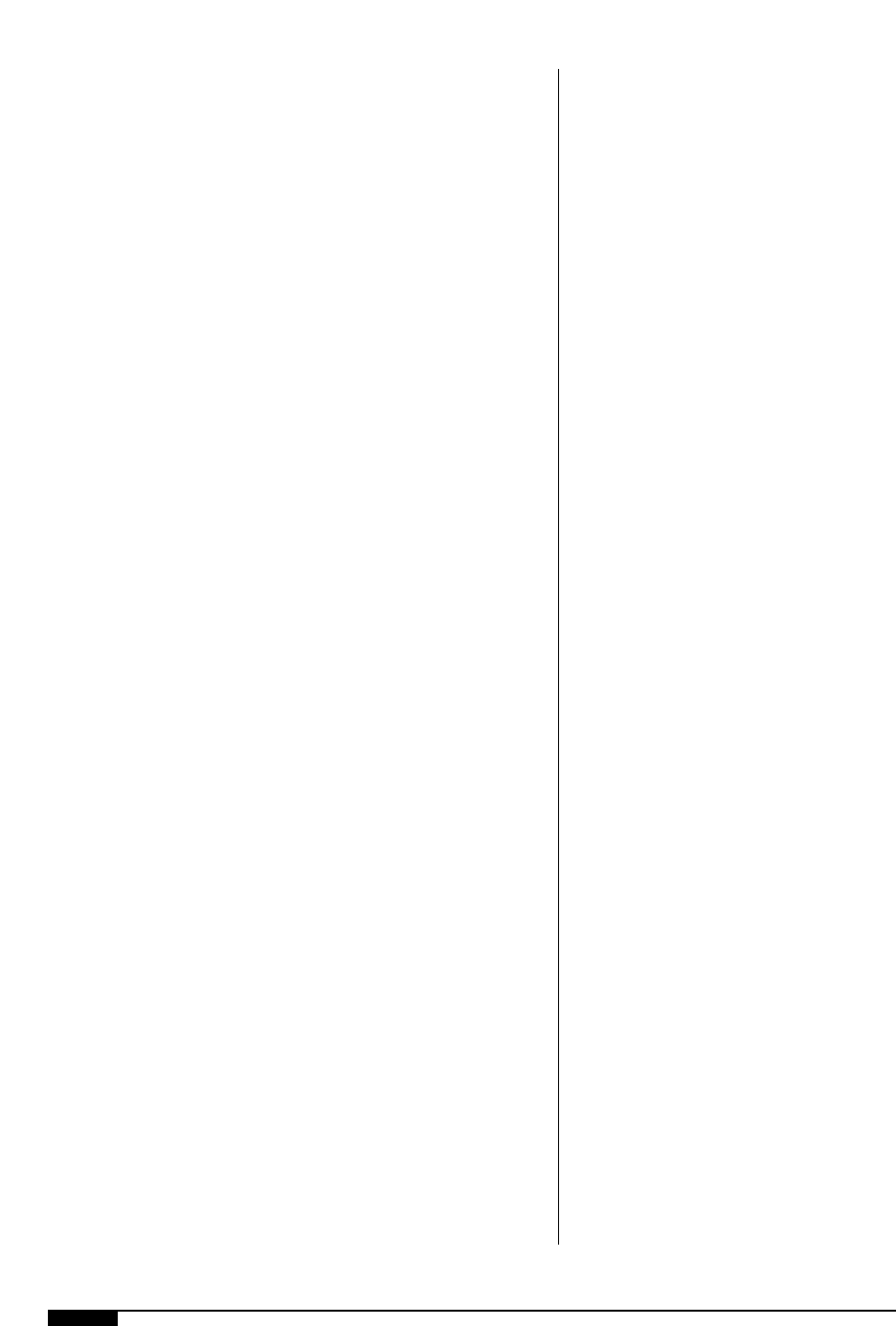
126 FLEXOGRAPHY: PRINCIPLES & PRACTICES
involve a corona field formed between two
electrodes in a quartz enclosure. The sheets
to be cleaned pass through this corona field,
which is generated through high voltage and
high frequency (5,000 to 7,000 cycles/sec and
at 15,000 volts). None of the dust removal
systems are absolutely perfect. However, if
the problem is addressed at its source, i.e., at
the point where dust and electrostatic
charges are produced, it can be controlled.
For more information on ionic substrate
cleaning, see the previous section.
Updating and Upgrading for
Continued Development
As mentioned previously, upgrading exist-
ing printing presses is in many cases as sim-
ple as installing finer anilox rolls and either
reverse-angle doctor blades or a chambered
doctor-blade system. Nevertheless, one has
to be aware that anilox rolls are only a tool
(albeit an expensive tool) and that there is
no universal anilox roll that can successfully
print more than a relatively narrow band of
graphics with a given volumetric capacity.
It is, of course, necessary that the machine
be in good mechanical condition, especially
with regard to register accuracy. Some man-
ufacturers offer vacuum transfers for board
conveyance as retrofits to improve on-press
register. The addition of a good lead-edge
feeder on an older press can also lead to
improved graphics.
Many on-press inspection devices, from
fiber optics to video cameras, are utilized in
the industry. Viscosity/pH control devices
are also finding more application in the cor-
rugated flexo printing field.
In a few years printing presses will have
“closed loop” controls whereby register cor-
rections, ink density and even color hue,
will be constantly monitored and corrected
without the press operator’s intervention.
JOB PREPARATION
AND PLANNING
With the increasing number of off-line flexo
printing presses and the push to reach higher
and higher quality with very fine screen
process images, it has become increasingly
important for corrugated flexographic print-
ers to better prepare and organize all aspects
of the converting process. For instance, when
four to five colors are printed and UV varnish
has been applied over dark colors, creases
may crack (also called checking) on the fold-
er-gluer, the very last operation performed
before the boxes are shipped. One can easily
imagine the seriousness this problem pre-
sents considering the waste of materials,
man-hours and press time.
It is highly recommended that with each
new project, the printer/converter conduct
certain lab tests such as rub tests, creasing
and bending tests, and moisture content mea-
sures of substrates. Collaboration with trade
shops and art designers must be established
by the printer/converter to have a good
exchange of ideas and practices that can be
applied (or not) to a printing/converting job.
Today, many corrugated boxes are used
where folding carton boxes were once used
exclusively. Such cartons are generally
called “folding-carton-style” corrugated
boxes. The placement and disposition of
graphics on these boxes is done with the
same scale of measure as with folding car-
tons. Graphics must appear parallel to creas-
es and, if possible, not run over box scores.
Basically, graphic designs and dispositions
that leave no room for manufacturing toler-
ances during printing, die cutting and fold-
ing/gluing create unnecessary waste.
As a general guideline, a converter must
know the manufacturing tolerances possible
on his printer, die cutter and folder/gluer, and
design the job for his equipment; not the
other way of trying to adapt the converting
machine to a job, which is an expensive and
incorrect process. As machinery becomes
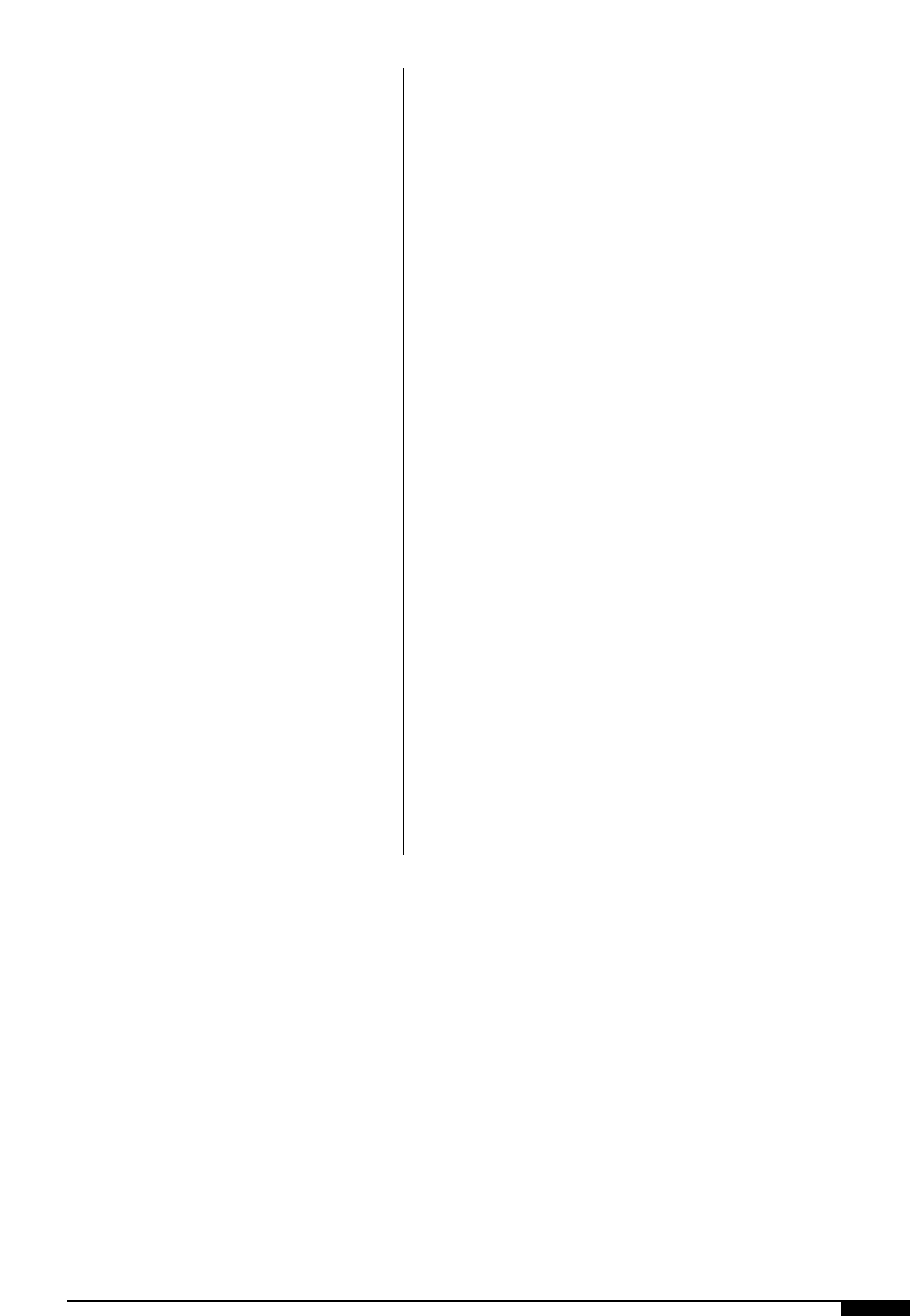
more accurate and allows for finer and finer
register tolerances, the many prepress opera-
tions, such as plate mounting, cutting die tol-
erances (especially on rotary dies) and waste
stripping tools must be manufactured with
tolerances even finer than those allowed on
the end product for which they are built.
Machinery manufacturers offer many
options on equipment to allow for correcting
errors. These are just a few examples:
• printing plate skewing devices correct
inaccurate printing plate mounting or
mounting of the lead-edge hook on a
bias;
• anilox roll adjustments put the roll out
of parallel to adjust for printing plate
caliper variations; and
• feeders with skewable front gates
adjust for printing performed on a bias.
Such features can sometimes help opera-
tors to “save the job.” Unfortunately, if
machine operators neglect to return such
systems to their zero position after a badly
mounted job has been run, a job that is
mounted correctly by a quality supplier will
not perform correctly without sometimes
lengthy adjustments.
Equipment Maintenance
In corrugated converting operations,
whether starting with rolls of linerboard or in
a sheet plant, maintenance involves many
different machines and many different con-
verting operations. Machinery maintenance
is generally handled by a crew of specialized
mechanics and electricians. In some smaller
operations, machine operators and press
crews are deeply involved in maintaining
their respective pieces of equipment. Both
options work quite well when the people
involved are very familiar with the process or
processes performed on a piece of equip-
ment. An increasing number of equipment
suppliers offer maintenance and process-ori-
ented seminars to help converters maintain
and improve their machinery and operations.
Training for
Continued Improvement
Flexo postprinting, the most-common
printing method for corrugated, high-end
graphics or just plain everyday printing, has
been experiencing a period of renewed
excitement. Different universities have start-
ed to show great interest in teaching flexog-
raphy, right down to on-press training.
Continued emphasis on education is crucial
for meeting the increasing demand for high-
quality flexo products.
PRESSES AND PRESS EQUIPMENT 127
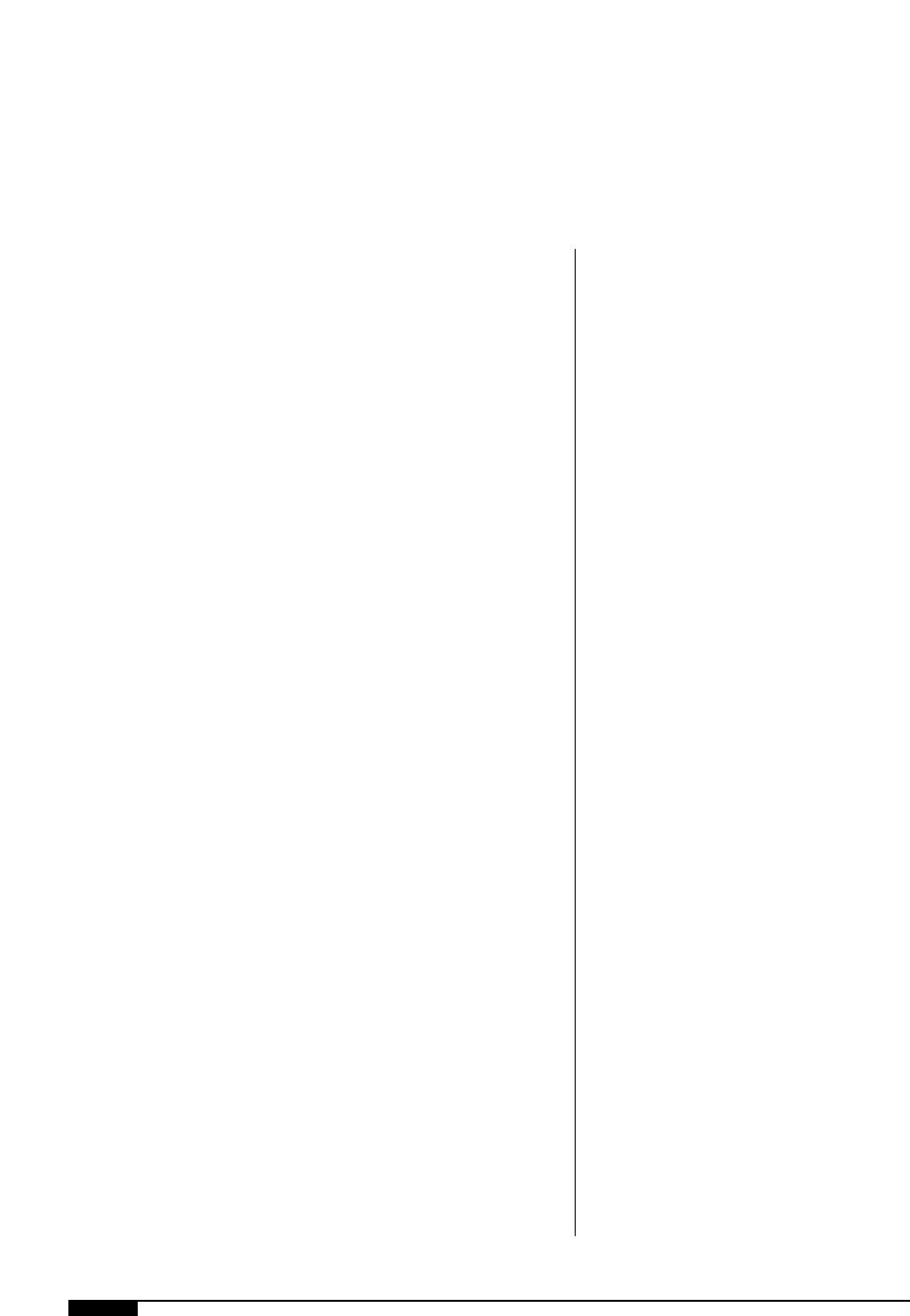
128 FLEXOGRAPHY: PRINCIPLES & PRACTICES
Press Mechanics
T
he increase in printing speeds
and quality standards in the
flexographic printing industry
today makes it necessary to
consider the importance of
accurately balancing the vari-
ous rolls and cylinders used in the press. To
better understand the problems involved
with an unbalanced cylinder, we must con-
sider that balancing is a process whereby the
distribution of mass in a roll is altered to
eliminate vibration at the supporting bear-
ings. A roll can be manufactured to very
close dimensional tolerances and can be
properly designed structurally so that it is a
rigid integral unit in a static state. Some-
times, however, in spite of all the care and
precautions taken, the press in which the roll
functions does not perform satisfactorily due
to excessive vibration. In the case of plate
cylinders, the addition of the plate mass
itself may cause imbalance vibrations. These
vibrations often limit the printing speeds the
press is mechanically capable of producing.
BALANCING FLEXO ROLLS
Consider the following problems that are a
direct result of vibrations produced by unbal-
anced cylinders:
• excessive printing plate wear;
• excessive bearing wear;
• excessive roll wear;
• reduction of the overall mechanical
efficiency of the printing unit, such as
uneven impressions;
• associated resonant vibration of other
parts of the press or its supporting
structure;
• possible failure of structural compo-
nents of the press; and
• excessive noise created as a side
effect, which often reduces efficiency
of the pressmen.
The cause of imbalance in rolls, although
usually obvious, is frequently overlooked.
Imbalance is caused by the lack of homogene-
ity in a material, whether it is cast, rolled,
forged, extruded or otherwise produced. In
the case of tubular or cylindrical products, an
uneven wall section can cause imbalance.
Evidence such as blow holes, slag occlusions
and variations in the crystalline and chemical
structure of a material are indications that the
raw materials used to produce the rolls are
not homogenous. Variation in the distribution
of mass due to manufacturing tolerances,
which must be allowed on all machine sur-
faces, is a major contributing factor.
Any manufacturing tolerances that permit
eccentricity or lack of squareness of machine
surfaces with respect to the rotational axis
are sources of imbalance. Non-symmetrical
distortion of a roll while running at its operat-
ing speed can also produce excessive vibra-
tion. This distortion is generally the result of
poor design, such as too small a diameter in
relation to face length, or of variations in wall
thickness of the material used to manufacture
the roll.
The need for balancing a flexographic
press roll is evident when we consider that
the center of mass of a roll will not neces-
sarily coincide with the rotational axis as
determined by its supporting bearings. A roll
that is not restrained by bearings will natu-
rally rotate about its center of mass.
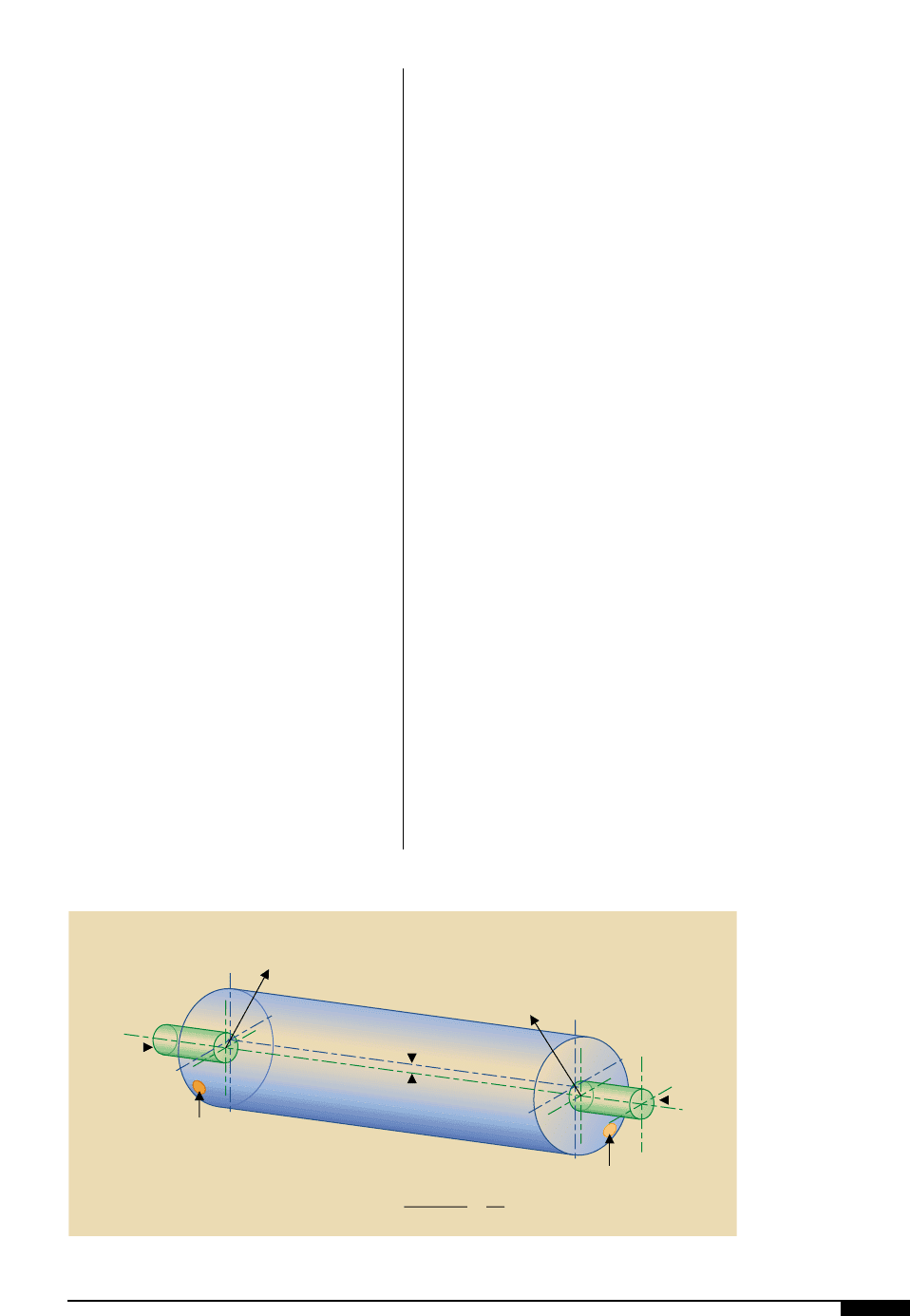
However, when the same roll is restrained
by bearings, it is forced to rotate about an
axis other than its center of mass due to the
run-out of the bearings. Consequently, cen-
trifugal forces are introduced, which cause
vibrations. To state it very simply, balancing
is merely an operation that eliminates vibra-
tion by redistributing the mass of the cylin-
der so as to cause its center of rotation to lie
on the same axis as that determined by the
supporting bearings.
Although there is varying terminology
used with respect to balancing, we are con-
cerned primarily with two types: static
imbalance and dynamic imbalance.
Static Imbalance
In static imbalance, only gravity or weight
force is involved, and balancing can be
accomplished without rotation. This type of
balancing is generally not satisfactory for
flexo rolls due to the rotational speeds at
which they operate and the ratio between
their diameter and axial length.
Dynamic Imbalance
Rotating parts ordinarily have both static
and dynamic imbalance. This combined stat-
ic and dynamic imbalance is corrected by
weights placed in two different planes per-
pendicular to the axis of rotation (Figure
9#
).
The weight compensates not only for the sta-
tic imbalance at rest but also for the dynamic
imbalance caused by centrifugal force when
the roll is rotating.
This two-plane balancing, which corrects
both static and dynamic unbalance, is gener-
ally referred to by engineers as dynamic bal-
ancing. Due to the physical and rotational
characteristics of flexo rolls they should in
every case be in dynamic balance when high
press speeds are used.
Forces on Bearings
The centrifugal force exerted on the
restraining bearings of an unbalanced roll is
proportional to both the weight of the roll
and the distance that its mass center is dis-
placed from the rotational axis.
The general formula for centrifugal force is:
FORCE
2
R W/g
or FORCE
2
DYNAMIC UNBALANCE
Where:
W = roll weight
g = gravitational constant
R = radius of rotation
= angular speed of rotation
We must therefore measure imbalance as
the product of weight and displacement,
expressed in terms of ounce-inches. An
imbalance of two ounce-inches is produced
PRESSES AND PRESS EQUIPMENT 129
9#
The process of dynamic
balancing: Placing
weights in two different
planes perpendicular
to the axis of rotation
compensates not only
for the static imbalance
at rest but also for the
dynamic imbalance
caused by centrifugal
force when the roll is
rotating.
Journal (a)
Axis of Roll
Axis of Rotation
Dynamic unbalance due to
maximum indicated run-out
on Journal (b)
Dynamic unbalance due to
maximum indicated run-out
on Journal (a)
Position balance weight
at minimum indicated
run-out on Journal (a)
Position balance weight
at minimum indicated
run-out on Journal (b)
Journal (b)
Balance Weight = x
Roll Weight
2
TIR
2
9#

130 FLEXOGRAPHY: PRINCIPLES & PRACTICES
by a two-ounce weight displaced 1" from the
rotation axis. For example, a roll weighing
125 lbs. (2,000 oz.) with its center of mass
0.001" from its rotational center as deter-
mined by its bearings, is 2 (2,000 x 0.001)
ounce-inches out of balance.
The magnitude of the centrifugal force
produced by a two-ounce unbalanced condi-
tion is a function of the speed of rotation or
in other words, the revolutions per minute of
the roll. This force, which produces vibra-
tions, increases as the square of the rota-
tional speed. For example, consider again
the roll that has an unbalanced condition of
two ounce-inches. When this roll is operated
at 500 rpm, it will produce a centrifugal force
of approximately 0.9 lbs. However, when we
increase the speed to 1000 rpm, we create a
centrifugal force of 3.6 lbs., or 4 times the
force at 500 rpm.
The example illustrates that there is a
much greater need for accuracy of balance
at higher speeds than at lower speeds. The
degree of balance required in a roll can only
be determined after consideration is given
to the operating speed in revolutions per
minute and the conditions under which the
roll will be used. Some of the factors that
must be considered are:
• the structural rigidity of the roll itself;
• the diameter in relation to the distance
between bearings; and
• the overall rigidity of the supporting
structure of the bearings.
Although all factors must be considered,
the following is recommended:
• All rolls, regardless of press speed,
should be in static balance.
• Rolls operated at 300–500 rpm should
be in dynamic balance within 10 ounce-
inches.
Table 7
ROLL DIAMETER (INCHES)
2 4 6 8 10 12 14 16 18
ROLL CIRCUMFERENCE (INCHES)
6.283 12.566 18.850 25.133 31.416 37.699 43.982 50.265 56.549
PRESS SPEED (FT/MIN) ROLL SPEED (Revolutions Per Minute)
100 191 95 64 48 38 32 27 24 21
200 382 191 127 95 76 64 55 48 42
300 573 286 191 143 115 95 82 72 64
400 764 382 255 191 153 127 109 95 85
500 955 477 318 239 191 159 136 119 106
600 1146 573 382 286 229 191 164 143 127
700 1337 668 446 334 267 223 191 167 149
800 NA 764 509 382 306 255 218 191 170
900 NA 859 573 430 344 286 246 215 191
1000 NA 955 637 477 382 318 273 239 212
1100 NA 1050 700 525 420 350 300 263 233
1200 NA 1146 764 573 458 382 327 286 255
1300 NA 1241 828 621 497 414 355 310 276
1400 NA 1337 891 668 535 446 382 334 297
ROLL SPEED VS. PRESS SPEED
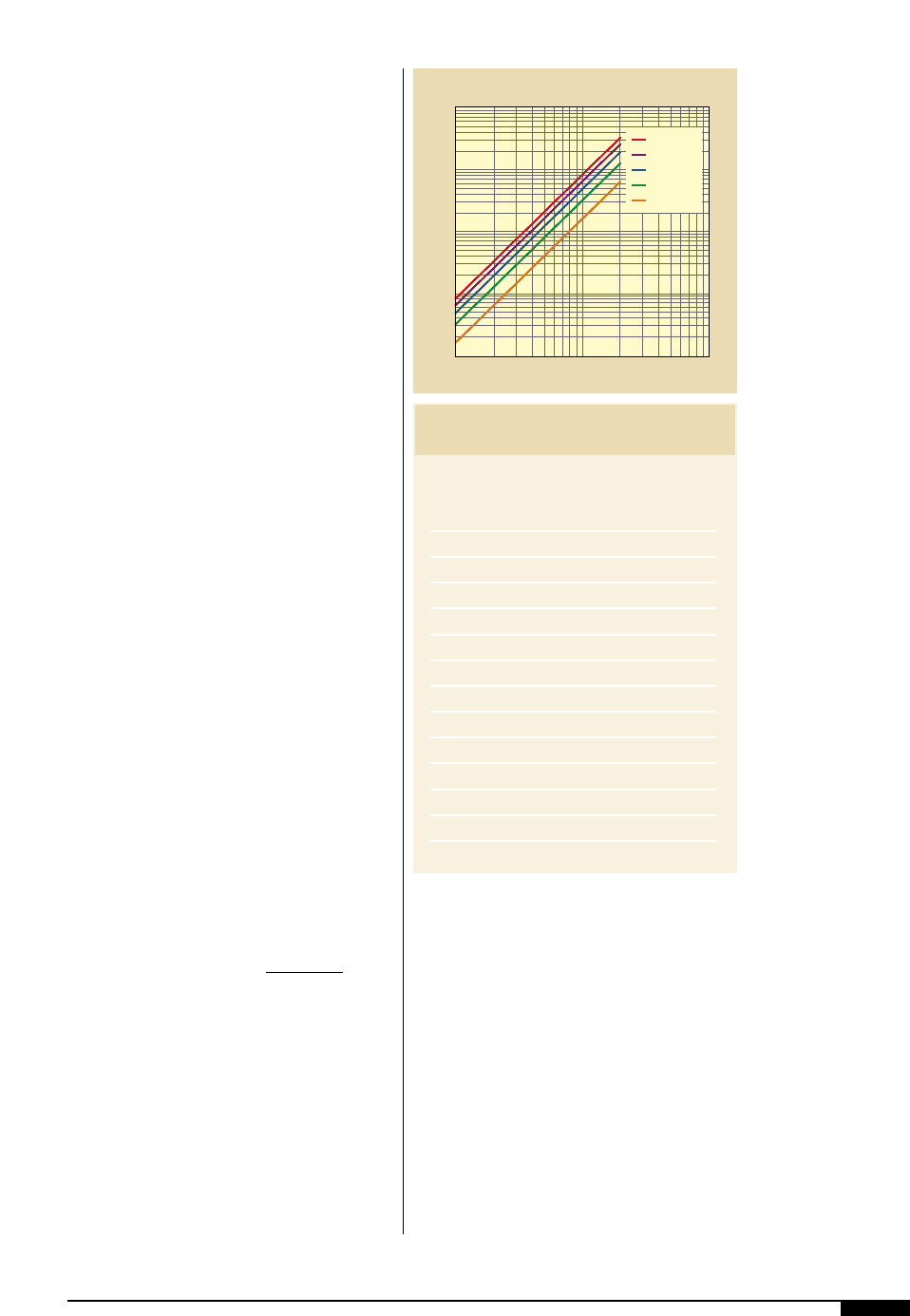
• Rolls operated at 500–1,000 rpm should
be in dynamic balance within 5 ounce-
inches.
• Rolls operated at over 1,000 rpm should
be in dynamic balance within 2 ounce-
inches.
Table 7 converts press speed in feet per
minute into roll speed in revolutions per
minute for various roll diameters and/or cir-
cumferences. Figure
9$
indicates centrifu-
gal force as a function of roll speed for vari-
ous units of imbalance in the base roll.
Allowable Total
Indicated Runout (TIR)
Table 8 gives allowable total indicated
runout (TIR), also called eccentricity, of bear-
ing journals for various rotational speeds.
DEFLECTION OF ROLLS
All rolls deflect, even under their own
weight. In addition to the weight of the roll
there are other factors, such as web tension,
impression loading and out-of-balance forces
that cause the roll to deflect. The following
discussion is limited to a uniformly loaded
roll running at low speed, so that conditions
approximate a uniformly loaded beam freely
supported at the ends.
The general formula for the deflection at
the center of a simply supported roll with a
uniformly distributed load is:
Maximum deflection 5 W L
3
384 E I
Where:
W= the total load on the rolls in lbs.
L = the length of the roll in inches.
I = the moment of inertia of the roll-
body cross-section, a function of
the fourth power of the shaft diameter
(D
4
) in inches.
E = the modulus of elasticity of the roll
material in pounds per square inch.
Note:
• The amount of deflection varies directly
with the load; i.e., doubling the load dou-
bles the deflection.
• Deflection varies directly with the cube
of the length; i.e., doubling the face
length while maintaining the same total
load increases the deflection eight times.
• Deflection varies inversely with the
moment of inertia of the cross-section.
• The moment of inertia of the cross-sec-
PRESSES AND PRESS EQUIPMENT 131
9$
Centrifugal force as a
function of roll speed
for various units of
imbalance in the base
roll.
Table 8
SHAFT SPEED ALLOWABLE TIR
RPM INCHES MICRONS
100 0.02000 508.0
200 0.00500 127.0
300 0.00222 56.4
400 0.00125 31.8
500 0.00080 20.3
600 0.00056 14.1
700 0.00041 10.4
800 0.00031 7.9
900 0.00025 6.3
1000 0.00020 5.1
1100 0.00017 4.2
1200 0.00014 3.5
1300 0.00012 3.0
1400 0.00010 2.6
ALLOWABLE TIR FOR VARIOUS
SHAFT SPEEDS
1 oz. inch
2 oz. inch
3 oz. inch
4 oz. inch
5 oz. inch
100 1,000 10,000
Roll Speed (revolutions per minute)
Centrifugal Force (lbs.)
100
10
1
0.1
0.01
9$
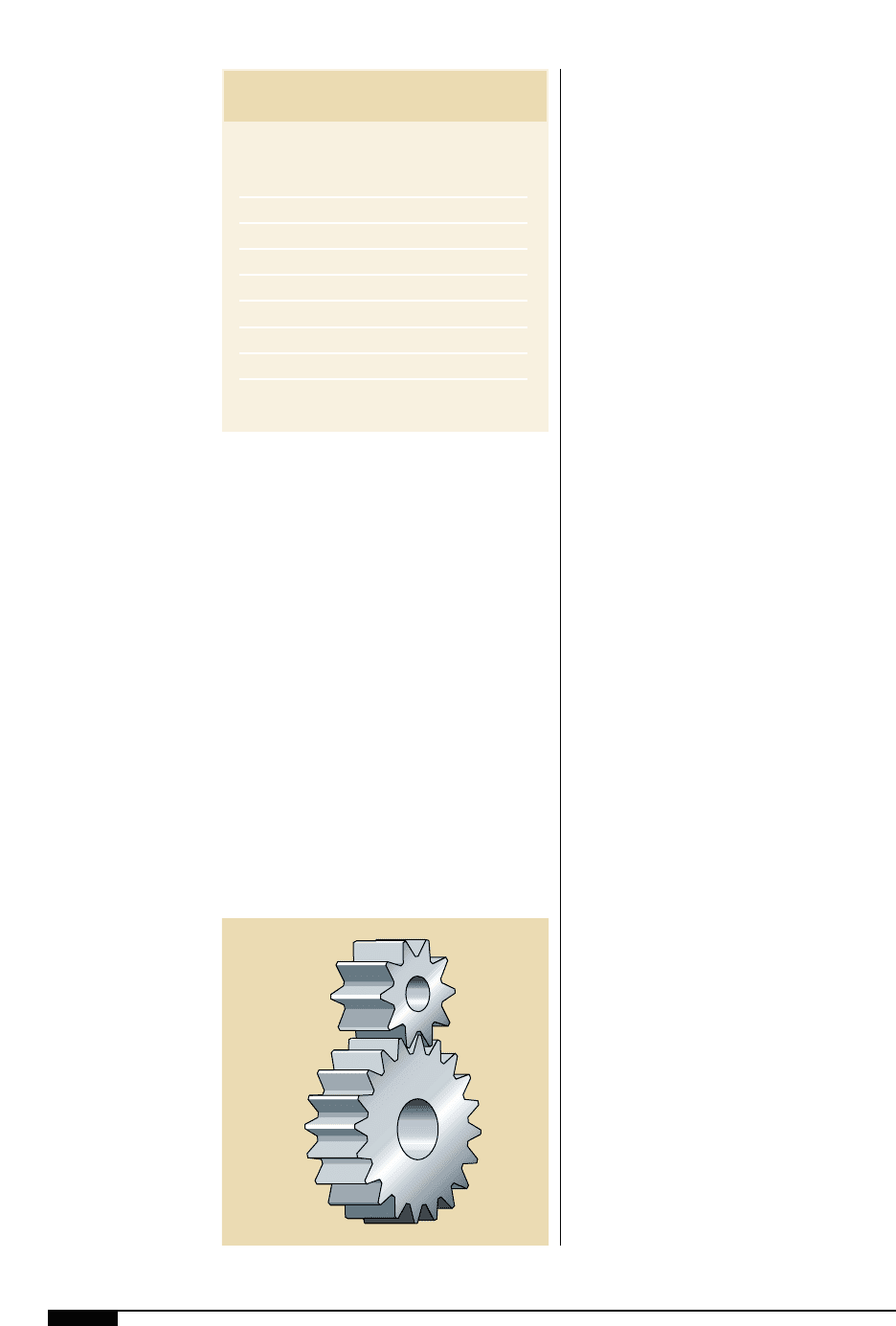
132 FLEXOGRAPHY: PRINCIPLES & PRACTICES
For a solid roll :
I 0.049 Roll Diameter
4
For a hollow roll:
I 0.049 OD
4
ID
4
Where:
OD = the outside diameter of the roll
ID = the inside diameter of the hollow roll
Table 9 lists the modulus of elasticity for
different roll materials. For example, if a roll
made of steel tube were to be replaced with a
similar one made of cast iron, then the deflec-
tion would be doubled because the modulus
of elasticity of cast iron is only half that of
steel. Similarly, the same roll made of alu-
minum would have three times the deflection.
To design a roll of cast iron having the same
deflection as a hollow steel roll it would be
necessary to double the moment of inertia for
the roll body, since the modulus of elasticity is
only half that of steel. This design could call
for a solid cast iron roll of approximately the
same diameter, weighing more than twice the
hollow steel roll.
The message here is: Changing rolls with-
in a press, or from press to press is not rec-
ommended. Although the rolls may look the
same, they may have very different deflec-
tion characteristics.
GEAR DRIVES
There are many different types of trans-
mission gearing, but the most common found
on flexographic presses are the spur, heli-
cal, bevel and worm gears.
Spur Gears. A spur gear has straight teeth,
which are machined parallel to the rotating
axis of the gear, at right angles to the face of
the gear (Figure
9%
). It is the most common
type of gear because it is the least expensive.
Spur gears are used to transmit power
between parallel shafts. They are generally
used to transmit power from the plate cylin-
der to the anilox roller.
tion varies as a function of the fourth
power of the diameter.
• Deflection varies inversely with the mod-
ulus of elasticity.
Since a roll is composed of shafts, heads
and a body, the cross-section of the roll is
not uniform. For practical purposes, the
cross-section may be considered to be that
of the main roll body, and the face length as
the distance between the support bearings.
In order to calculate the approximate deflec-
tion of a given roll, one must first determine
I, the moment of inertia of the roll-body
cross-section.
9%
Spur gears have
straight teeth, which are
machined parallel to the
rotating axis of the gear,
at right angles to the
face of the gear.
Table 9
MATERIAL MODULUS
MILLION LB/SQ. IN.
Steel 30
Cast Iron 15
Copper 14
Brass 14
18/8 Stainless Steel 14
Aluminum alloys 10.0–10.3
Air-Seasoned Fir 1.5*
Air-Seasoned Poplar 1.5*
*Varies considerably.
MODULUS OF ELASTICITY
OF DIFFERENT ROLL MATERIALS
9%
